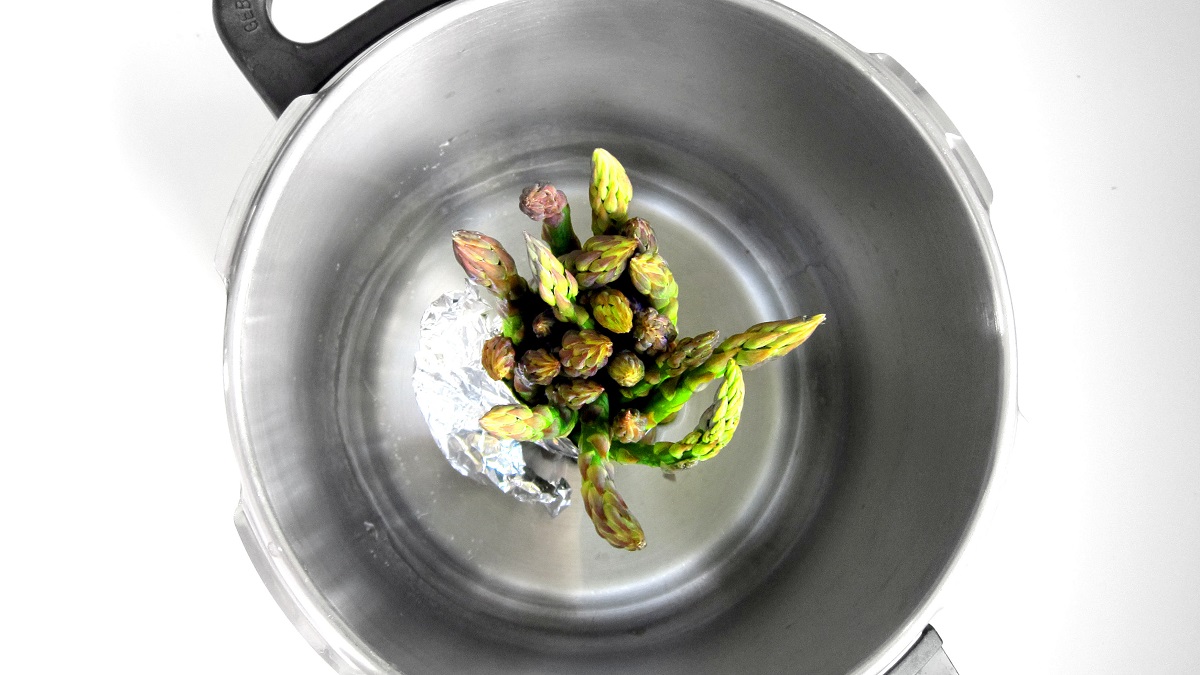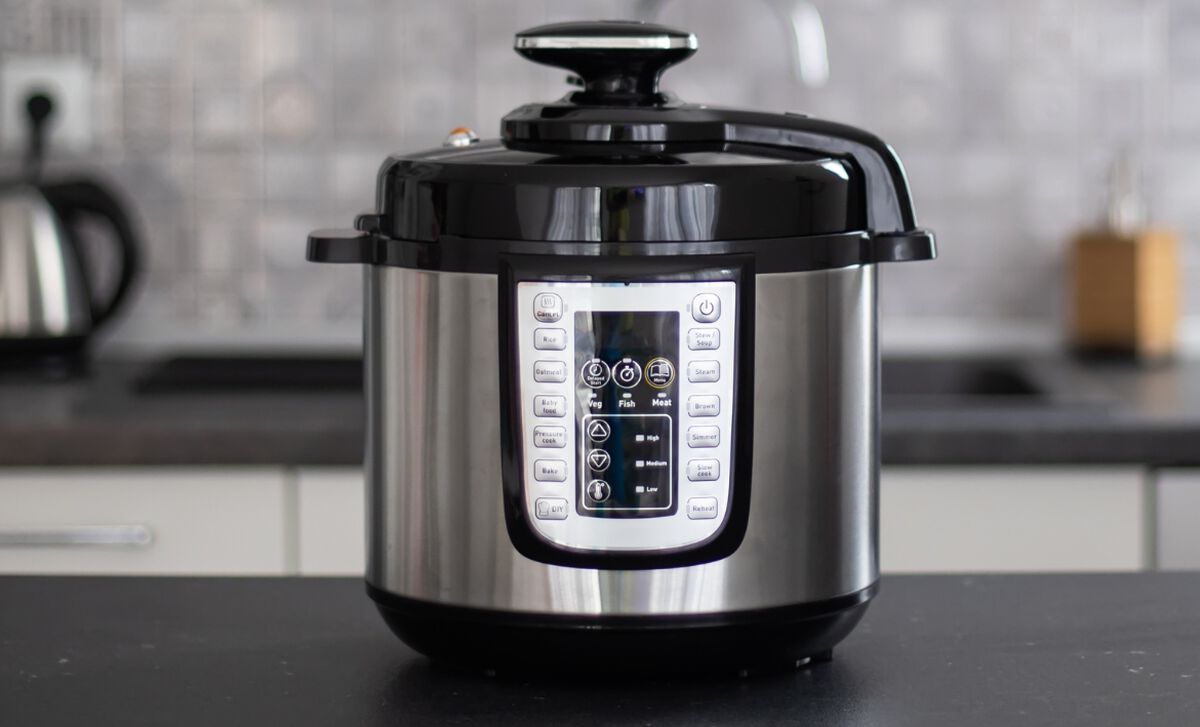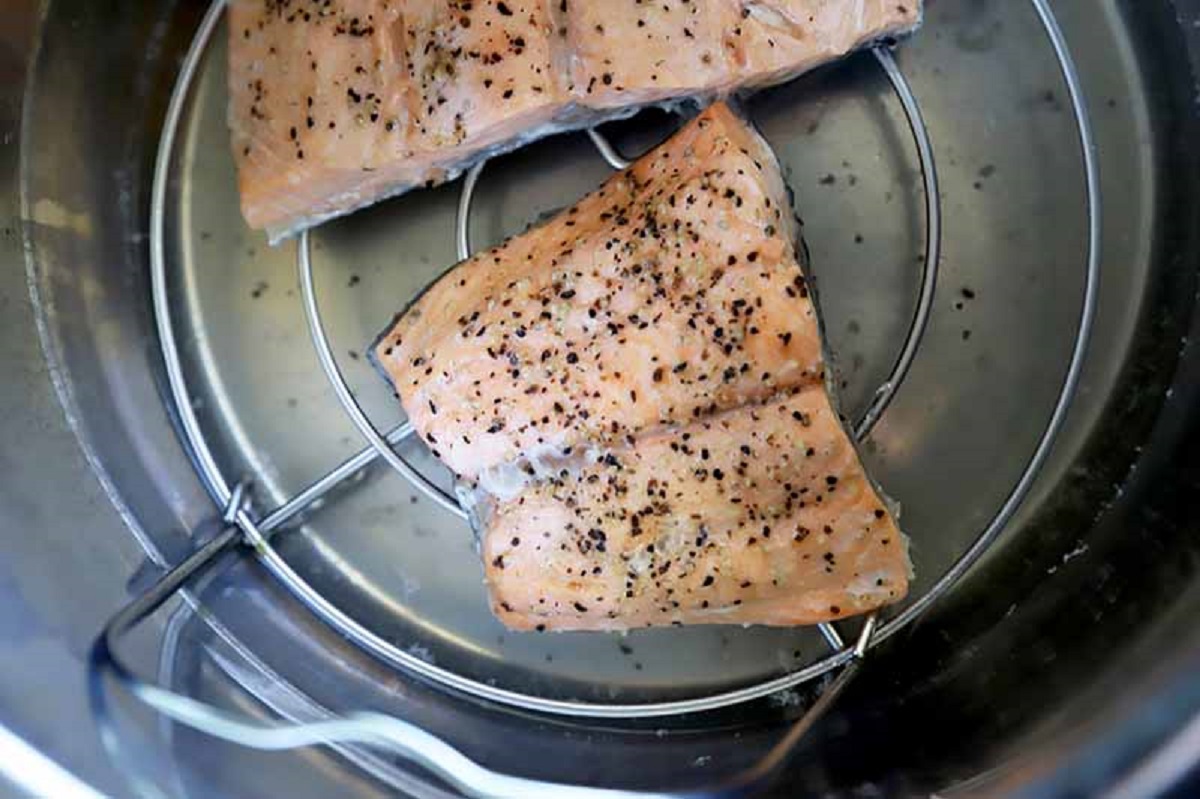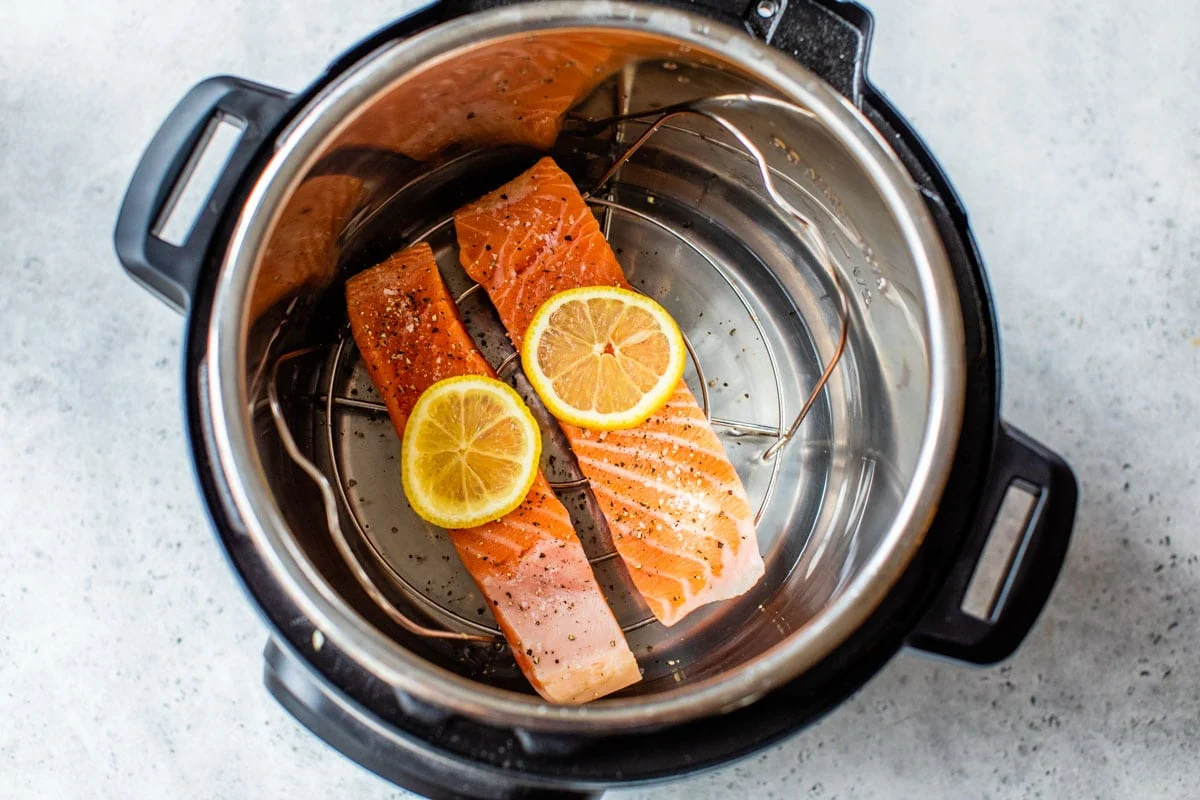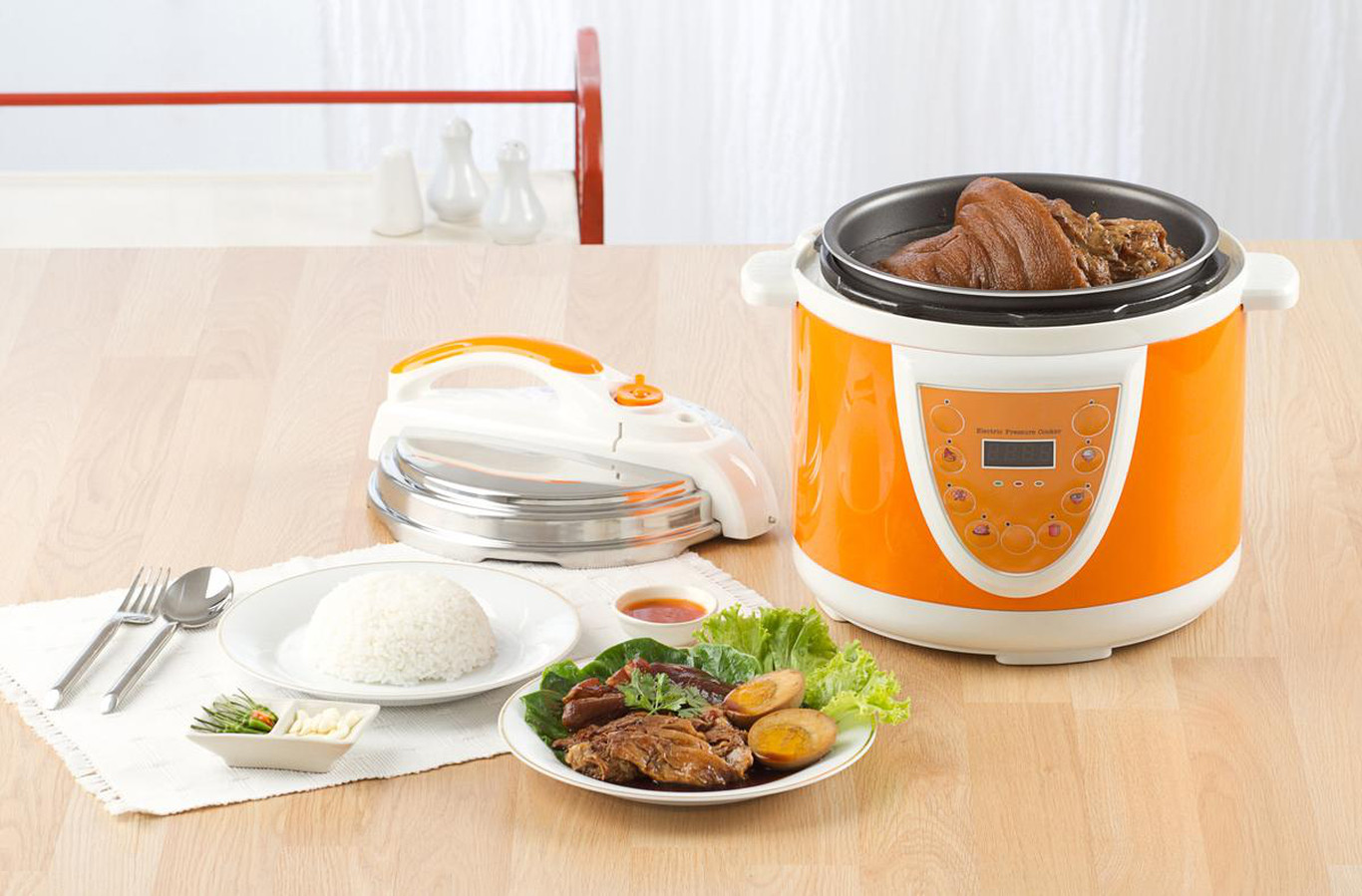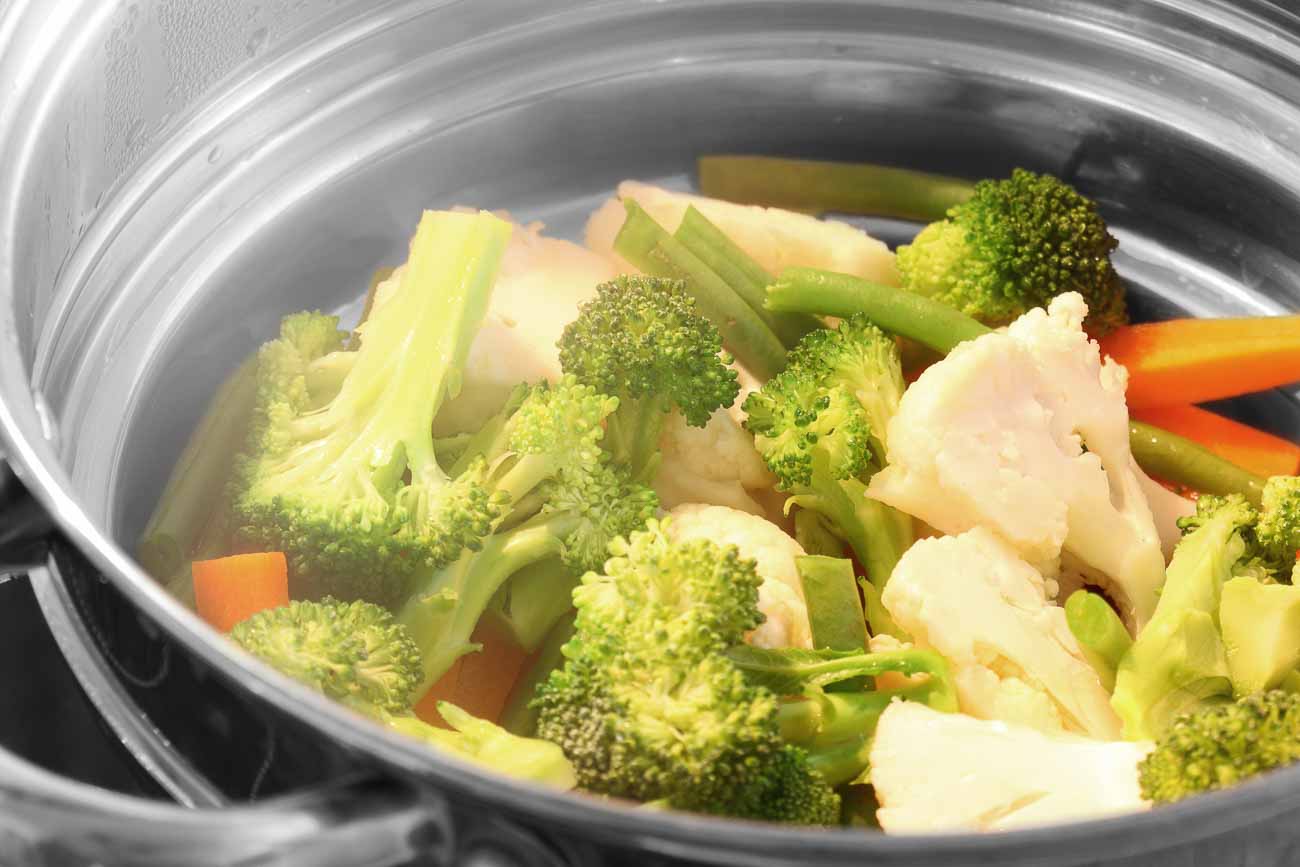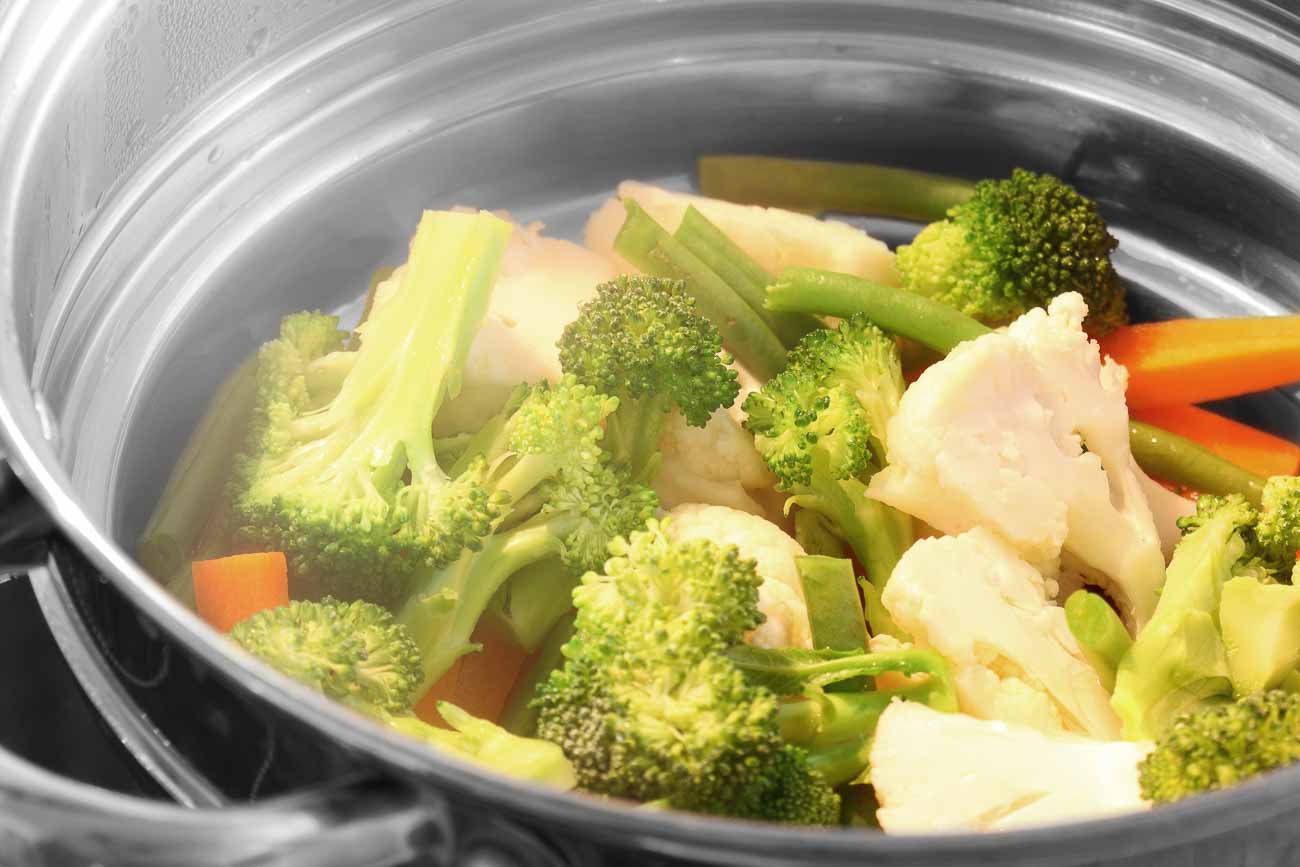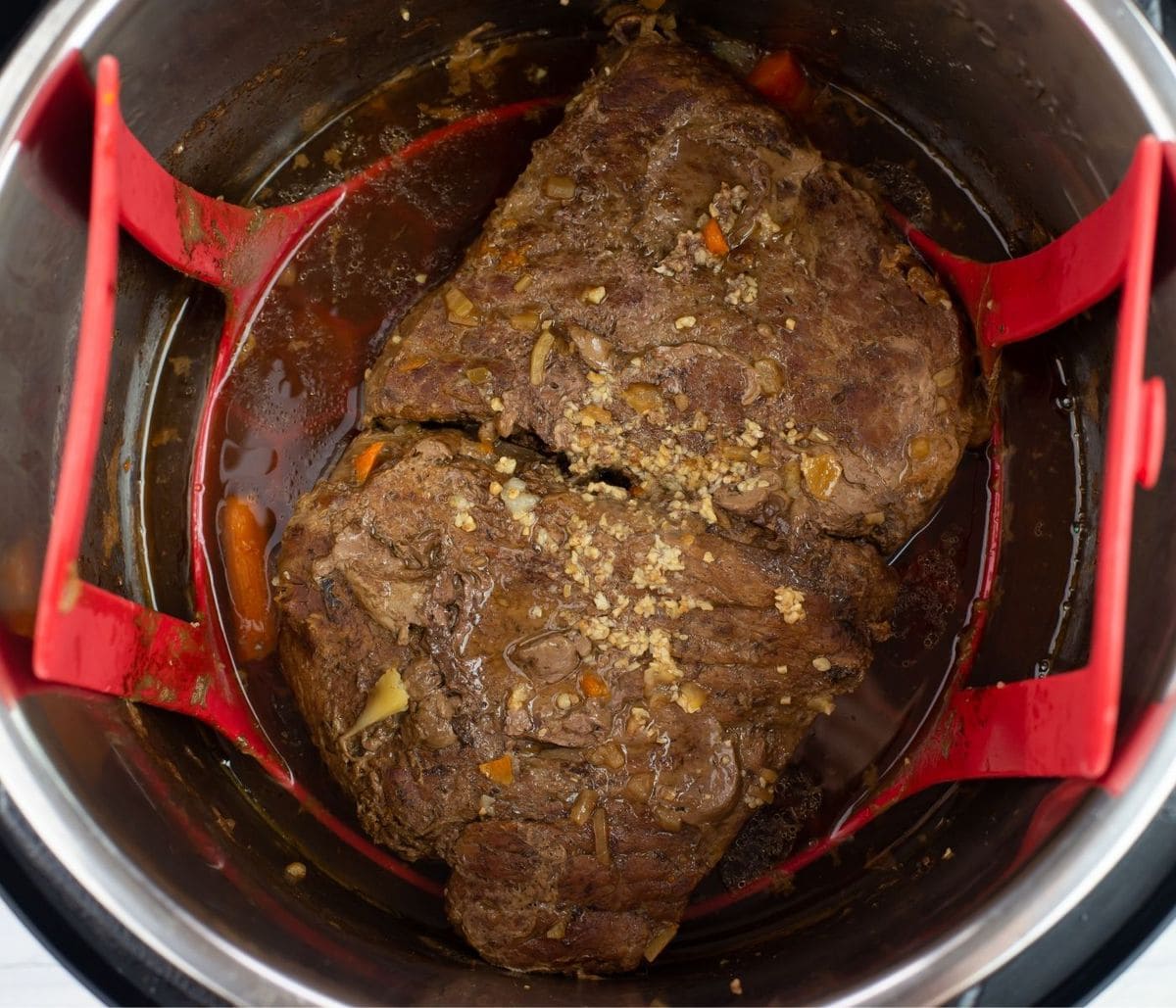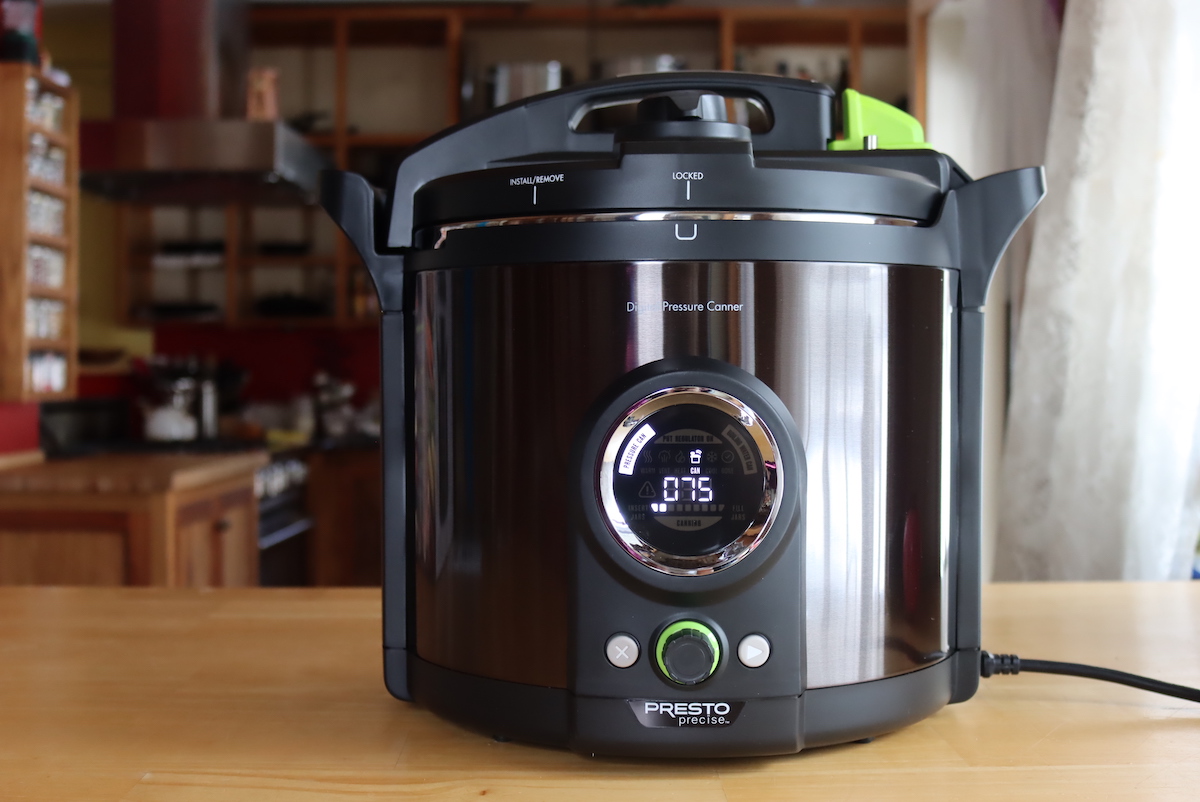Understanding the Basics of Cooking Asparagus in an Electric Pressure Cooker
Asparagus, with its crisp texture and delicate flavor, is a versatile vegetable that can be enjoyed in a variety of dishes. Cooking asparagus in an electric pressure cooker not only saves time but also helps to retain its vibrant color and nutrients. However, to achieve the perfect texture and flavor, it is essential to understand the basics of cooking asparagus in an electric pressure cooker.
Firstly, it is important to choose fresh asparagus spears that are firm, straight, and vibrant in color. Before cooking, rinse the asparagus thoroughly and trim off the tough ends. You can do this by holding the spear at the base and gently bending it until it snaps. This technique ensures that you remove the woody part of the asparagus.
Next, add a cup of water or vegetable broth to the electric pressure cooker. This will create the steam necessary for cooking the asparagus under pressure. Place a steamer basket in the cooker and arrange the trimmed asparagus spears evenly. Close the lid securely, ensuring the pressure release valve is set to the sealing position.
When it comes to cooking time, asparagus requires only a short duration to reach the desired tenderness. Set the electric pressure cooker to cook on high pressure for 1-3 minutes, depending on the thickness of the asparagus spears. Thicker spears may require the longer end of the cooking time range, while thinner spears will cook more quickly.
Once the cooking time is complete, you can choose between a quick-release or natural-release method. The quick-release method involves manually releasing the pressure by turning the pressure release valve. This method is suitable for maintaining the crisp texture of the asparagus. On the other hand, the natural-release method allows the pressure to release naturally over time. This method is ideal for more delicate asparagus spears.
To test the doneness of the asparagus, carefully open the pressure cooker lid and insert a fork or knife into one of the spears. It should easily pierce through, but the asparagus should still have a slight crunch. If the asparagus is too soft or mushy, reduce the cooking time slightly in the future.
Once the asparagus is cooked to your liking, carefully remove it from the pressure cooker using tongs or a slotted spoon. Season it with salt, pepper, and any other desired herbs or spices. You can also dress it with a squeeze of lemon juice or a drizzle of olive oil for added flavor.
Now that you understand the basics of cooking asparagus in an electric pressure cooker, you can confidently incorporate this delicious vegetable into your meals. Experiment with different cooking times and flavor combinations to create mouthwatering dishes that showcase the natural goodness of asparagus.
Preparing the Asparagus for Pressure Cooking
Before diving into the process of pressure cooking asparagus, it is essential to prepare the spears properly to ensure optimal results. The preparation steps are simple and straightforward, allowing you to focus on the cooking process itself.
Start by selecting fresh asparagus that is firm and vibrant in color. Look for spears with tightly closed tips and smooth skin. Avoid asparagus with wilted or slimy stalks, as these are signs of deterioration.
Once you have chosen your asparagus, it’s time to give them a good rinse. Place the spears under running water, gently massaging them to remove any dirt or debris. Pat them dry with a clean kitchen towel or paper towels, ensuring that they are completely dry before proceeding.
Now comes the crucial step of trimming the asparagus. Hold a spear at the base and gently bend it until it snaps. The spear will naturally break at the point where the tender part meets the woody stem. Discard the woody end, as it is tough and not pleasant to eat. Repeat this step with the remaining spears, ensuring that they are all trimmed to a similar length.
If you prefer uniform-sized asparagus spears, you can use a knife to cut them to the desired length. This step is optional but can help ensure even cooking.
Once the asparagus spears are trimmed, you are ready to move on to the cooking process. Place a cup of water or vegetable broth in your electric pressure cooker. This liquid will create the necessary steam to cook the asparagus under pressure. If you prefer a more flavorful asparagus, you can use seasoned broth or add herbs and spices to the cooking liquid.
Now, it’s time to arrange the prepared asparagus spears in a steamer basket or a trivet inside the pressure cooker. Ensuring that the spears are evenly spread out will promote even cooking and prevent them from becoming squished or overcrowded.
Once the asparagus is arranged in the pressure cooker, securely close the lid and ensure that the pressure release valve is set to the sealing position. This will create a sealed environment that will allow the asparagus to cook efficiently under pressure.
With the asparagus properly prepared, you can now move on to setting the right time and pressure for cooking. This step will ensure that your asparagus is cooked to perfection, with just the right amount of tenderness and flavor.
By following these simple steps to prepare your asparagus for pressure cooking, you are setting the foundation for a delicious and satisfying dish. Taking the time to properly clean and trim the asparagus will enhance its natural flavor and texture, making it a standout ingredient in your meals.
Setting the Right Time and Pressure for Cooking Asparagus
When it comes to cooking asparagus in an electric pressure cooker, finding the perfect balance of time and pressure is key to achieving tender yet crisp spears. By understanding the factors that influence the cooking process, you can ensure that your asparagus turns out cooked to perfection every time.
The cooking time for asparagus in an electric pressure cooker depends on the thickness of the spears. Thicker asparagus spears generally require slightly longer cooking times, while thinner ones cook more quickly. As a general guideline, set the pressure cooker to cook on high pressure for 1-3 minutes for optimal results.
Keep in mind that the cooking time begins once the pressure has built up inside the cooker. It’s essential to factor in the time it takes for the pressure to rise, which may vary depending on your specific electric pressure cooker model. On average, most electric pressure cookers take around 5-10 minutes to reach full pressure.
Additionally, the cooking time can be adjusted based on personal preference. If you prefer your asparagus to have a slight crunch, opt for the lower end of the cooking time range. For a more tender texture, choose the longer end of the range. However, be cautious not to overcook the asparagus, as it may become mushy and lose its vibrant color.
Alongside the cooking time, the pressure setting is another important aspect to consider. Most electric pressure cookers offer a default high-pressure setting, which is suitable for cooking asparagus. High pressure ensures efficient and quick cooking, allowing the asparagus spears to retain their nutrients and vibrant color.
However, if your electric pressure cooker allows you to adjust the pressure, select the high-pressure setting for cooking asparagus. The higher pressure helps to break down the tough fibers of the asparagus, resulting in a more tender texture and enhanced flavor.
It’s worth noting that cooking times and pressure settings can vary slightly depending on personal preference and the specific electric pressure cooker model you are using. It’s always a good idea to refer to the manufacturer’s instructions for recommended cooking times and pressure settings.
By understanding the importance of time and pressure in cooking asparagus, you can tailor the cooking process to your desired results. Experimenting with different cooking times and pressure settings will help you find the perfect combination for achieving tender and delicious asparagus spears in your electric pressure cooker.
Quick-Release or Natural-Release: Which Method to Choose?
Once the cooking time for asparagus in an electric pressure cooker is complete, you have two options for releasing the pressure: quick-release and natural-release. Both methods have their advantages and considerations, so let’s explore the differences to help you decide which method is best for your pressure-cooked asparagus.
Quick-release is a method where you manually release the pressure from the electric pressure cooker immediately after the cooking time is complete. It involves turning the pressure release valve to allow the steam to escape quickly. Quick-release is ideal for ingredients like asparagus that benefit from retaining their crisp texture.
Using the quick-release method allows you to quickly halt the cooking process and prevent the asparagus from overcooking. It is particularly useful if you prefer your asparagus to have a slight crunch. Once the pressure is released, carefully open the lid, and your pressure-cooked asparagus is ready to be tasted and served.
On the other hand, natural-release is a method where you allow the pressure to release naturally over time. With this method, you leave the electric pressure cooker untouched once the cooking time is complete. The pressure gradually decreases within the cooker, and the asparagus continues to cook gently in the residual heat.
The natural-release method is suitable for more delicate asparagus spears that may become mushy or overcooked if subjected to a quick, drastic pressure release. By allowing the pressure to release naturally, you give the asparagus the opportunity to maintain a tender yet firm texture.
Using the natural-release method can also be advantageous if you’re multitasking in the kitchen. The residual heat in the electric pressure cooker continues to cook the asparagus, providing a buffer of time before you need to release the pressure and serve the dish.
When deciding between quick-release and natural-release, consider the desired texture of your asparagus, as well as the time you have available. If you enjoy a slightly crunchy texture and need the dish on the table quickly, opt for quick-release. If you prefer a tender texture and have the luxury of time, natural-release is the way to go.
It’s important to follow safety guidelines when releasing pressure from the electric pressure cooker, regardless of the method you choose. Always ensure that your hands and face are clear of the steam when turning the pressure release valve. Take caution to avoid potential burns and follow the manufacturer’s instructions for your specific electric pressure cooker model.
Whether you choose the quick-release or natural-release method, both techniques can yield excellent results when cooking asparagus in an electric pressure cooker. Consider your preference for texture and time constraints to select the method that best suits your needs.
Testing the Doneness of Cooked Asparagus in an Electric Pressure Cooker
Testing the doneness of cooked asparagus is an essential step in ensuring that it is cooked to your desired level of tenderness. By using simple visual and physical cues, you can easily determine whether your asparagus is cooked to perfection in an electric pressure cooker.
After the designated cooking time is complete and you have released the pressure from the electric pressure cooker, carefully open the lid and inspect the asparagus. The color should be vibrant, with a bright green hue that indicates freshness. Overcooked asparagus tends to lose its color and appear dull or olive in color.
Using a fork or a sharp knife, gently pierce one of the asparagus spears. It should easily go through the spear without much resistance. Ideally, the asparagus should have a slight crunch when bitten into but not be overly firm.
If the asparagus feels too firm and the fork or knife doesn’t easily go through the spear, it may need additional cooking time. Simply close the lid, bring the electric pressure cooker back to pressure, and cook for an additional minute or two. Remember to consider the size and thickness of the asparagus spears when determining the extended cooking time.
Conversely, if the asparagus feels overly soft and mushy, it may be overcooked. Take note of the cooking time and pressure setting used and adjust it for future reference. Asparagus is delicate and can become quickly overcooked, so it’s important to find the right combination of time and pressure to achieve the desired texture.
Another way to test the doneness of cooked asparagus is by examining the shape and structure of the spears. They should be intact and not falling apart. Overcooked asparagus may become limp and lose its structural integrity.
If you’re unsure about the doneness of your cooked asparagus, it’s better to err on the side of slight undercooking. You can always return it to the electric pressure cooker for a few additional minutes of cooking if necessary.
Testing the doneness of cooked asparagus allows you to ensure that it is cooked to your preference and maintains its flavor and texture. By using visual cues, physical testing, and adjusting cooking times as needed, you can enjoy perfectly cooked asparagus in your electric pressure cooker.
Tips for Seasoning and Serving Pressure-Cooked Asparagus
Seasoning and serving pressure-cooked asparagus is the final step in creating a delightful dish. By adding the right flavors and presenting it in an appealing way, you can elevate the taste and presentation of your pressure-cooked asparagus. Here are some tips to enhance the flavor and make your asparagus a standout element in your meal:
1. Season with salt and pepper: A simple sprinkle of salt and freshly ground black pepper can bring out the natural flavors of asparagus. It’s best to season the asparagus just before serving to ensure the flavors are vibrant.
2. Experiment with herbs and spices: Asparagus pairs well with a variety of herbs and spices. Consider adding some minced garlic, a squeeze of lemon juice, or a sprinkle of dried herbs like thyme, rosemary, or dill. These additions can provide depth of flavor and a touch of freshness.
3. Drizzle with olive oil or melted butter: A light drizzle of extra virgin olive oil or melted butter can contribute richness and add a glossy sheen to your asparagus. These fats can also help to bring out the flavors and provide a luxurious mouthfeel.
4. Incorporate grated cheese: Consider sprinkling some grated Parmesan, Pecorino Romano, or feta cheese over the cooked asparagus. The salty and tangy notes of cheese can complement the earthy flavors of asparagus and create a savory contrast.
5. Add a touch of acidity: If you enjoy a touch of brightness, squeeze some lemon juice or sprinkle a splash of balsamic vinegar over the cooked asparagus. The acidity can balance the richness and add a refreshing zing to the dish.
6. Mix in other ingredients: Asparagus can complement a wide variety of other ingredients. Consider tossing it with cooked pasta, roasted cherry tomatoes, or sautéed mushrooms for a more substantial dish. You can also incorporate it into salads, frittatas, or stir-fries for added versatility.
7. Garnish for visual appeal: Sprinkle some finely chopped fresh herbs, such as parsley or chives, over the asparagus to add a pop of color and freshness. Consider adding some toasted nuts, like slivered almonds or pine nuts, for added texture and a nutty flavor.
When serving pressure-cooked asparagus, you can arrange it neatly on a platter or individual plates. Consider drizzling any extra seasonings or sauces over the asparagus for added flavor and presentation. Let your creativity shine by experimenting with different seasonings, garnishes, and serving suggestions to create a dish that suits your taste and complements your meal.







